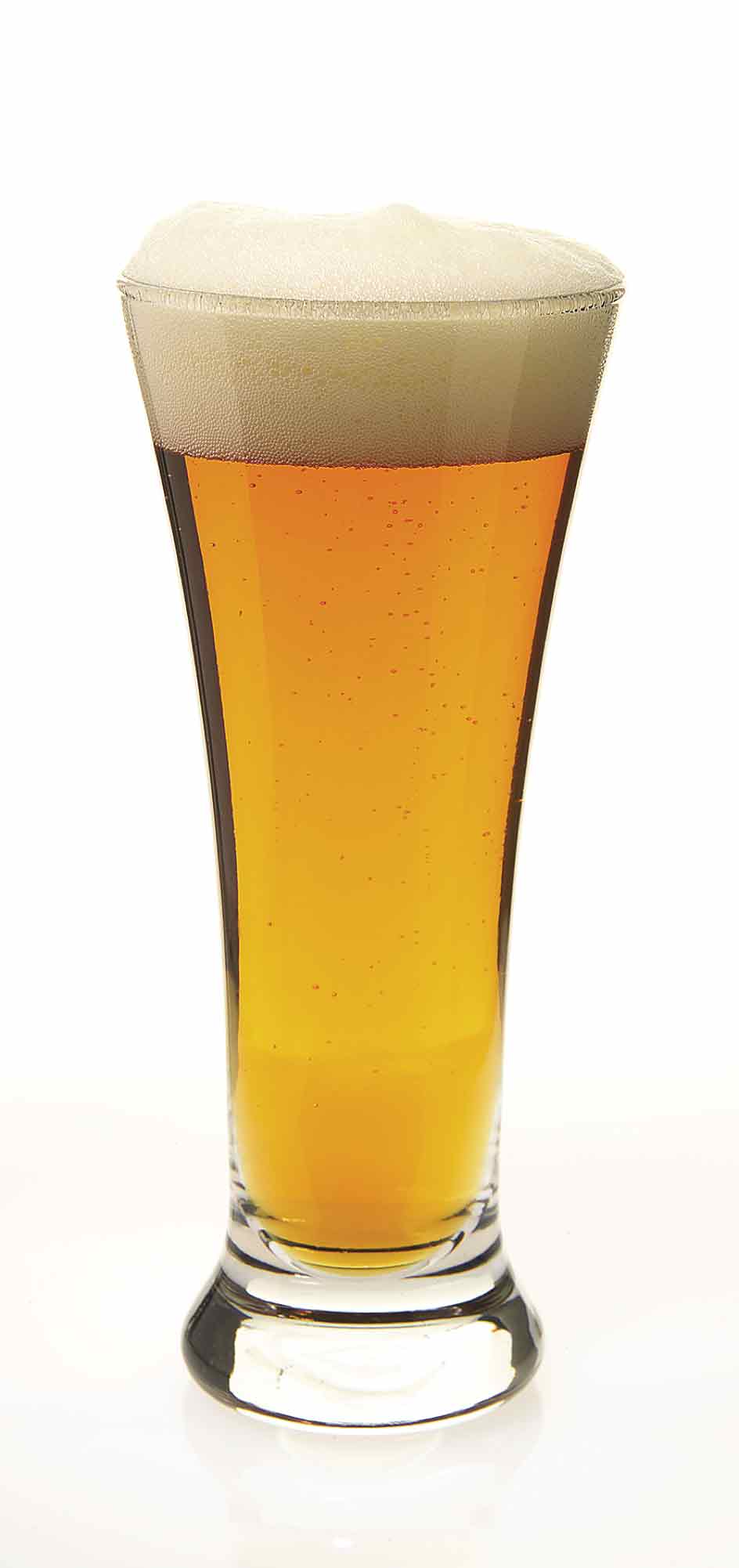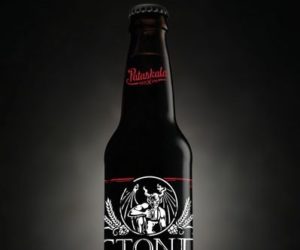The Hammer Rye IPL
The Hammer Rye IPL
(5 gallons/19 L, all-grain)OG = 1.071 FG = 1.014 IBU = 66 SRM = 6 ABV = 8.3%
Inspired by Jack’s Abby Brewing RIPL Effect, this was my attempt to brew something akin with a rye edge coming out from behind the bold hop profile. Jack’s Abby used triticale, but I used a rye malt in my brew, and also used the hops I had on hand.
Ingredients
10 lbs. (4.54 kg) continental Pilsner malt
5 lbs. (2.27 kg) rye malt
8 oz. (0.23 kg) crystal malt (10 °L)
6 oz. (170 g) rice hulls
4.4 AAU Apollo hops (first wort hops) (0.25 oz./7 g at 18% alpha acids)
9 AAU Apollo hops (15 min.) (0.5 oz./14 g at 18% alpha acids)
9.6 AAU Columbus hops (0 min.) (0.75 oz./21 g at 13% alpha acids)
9.2 AAU Chinook hops (0 min.) (0.75 oz./21 g at 12.2% alpha acids)
4.8 AAU Cascade hops (0 min.) (0.75 oz./21 g at 6.4% alpha acids)
7.1 AAU Amarillo® hops (0 min.) (0.75 oz./21 g at 9.5% alpha acids)
1.5 oz. (43 g) Amarillo® hops (dry hop)
0.75 oz. (21 g) Chinook hops (dry hop)
0.75 oz. (21 g) Cascade hops (dry hop)
Wyeast 2007 (Pilsen Lager) or White Labs WLP840 (American Lager) yeast as a (~4 qt./4 L) starter
1 tsp. gypsum (optional if using low mineral water)
2⁄3 cup corn sugar (if priming)
Step by Step
This is a single infusion mash. Heat 5.6 gallons (21.2 L) of strike water to 168 °F (76 °C) to stabilize the mash temperature at 152 °F (67 °C). Rest at this temperature for 45 minutes then begin lautering. Once you begin your run-off into your kettle add the first wort hops to the kettle. Collect 6.5 gallons (25 L) of wort, add the optional gypsum (see ingredients list) and boil for 75 minutes adding the second addition of hops with 15 minutes left in the boil.
After the boil is complete, begin a 20-minute whirlpool phase, keeping the wort hot. Rapidly chill wort to 52 °F (11 °C), pitch an appropriate yeast starter (~4 qt./
4 L) and aerate the wort thoroughly. Ferment at 52 °F (11 °C). After primary fermentation is complete (1–2 weeks), drop the temperature of the beer down to 45 °F (7 °C) and condition for one to three weeks. After conditioning, gently rack the beer into a CO2 flushed secondary vessel with flushed hops already in the vessel. Raise the temperature to 55–60 °F (13–16 °C) and wait three to seven days on the dry hops. Bottle the beer with priming sugar or rack the beer to a keg and force carbonate. Carbonate the beer to 2.4 volumes CO2.
The Hammer Rye IPL
(5 gallons/19 L, extract only)OG = 1.071 FG = 1.014 IBU = 66 SRM = 8 ABV = 8.3%
Ingredients
10 lbs. (4.54 kg) rye liquid malt extract
4.4 AAU Apollo hops (first wort hops) (0.25 oz./7 g at 18% alpha acids)
9 AAU Apollo hops (15 min.) (0.5 oz./14 g at 18% alpha acids)
9.6 AAU Columbus hops (0 min.) (0.75 oz./21 g at 13% alpha acids)
9.2 AAU Chinook hops (0 min.) (0.75 oz./21 g at 12.2% alpha acids)
4.8 AAU Cascade hops (0 min.) (0.75 oz./21 g at 6.4% alpha acids)
7.1 AAU Amarillo® hops (0 min.) (0.75 oz./21 g at 9.5% alpha acids)
1.5 oz. (43 g) Amarillo® hops (dry hop)
0.75 oz. (21 g) Chinook hops (dry hop)
0.75 oz. (21 g) Cascade hops (dry hop)
Wyeast 2007 (Pilsen Lager) or White Labs WLP840 (American Lager) yeast
1 tsp. gypsum (optional if using low mineral water)
2⁄3 cup corn sugar (if priming)
Step by Step
I’ve used the Briess rye liquid malt extract which is made up of about 20% rye malt and 10% caramel malt (40 °L). This will give the beer a slightly less rye edge and a slightly more caramel flavor than the all-grain version. That said, it will still produce an amazing beer.
Add 5.5 gallons (21 L) of water plus malt extract to your kettle. When the temperature of the kettle reaches about
180 °F (82 °C), add the first wort hops to the kettle. Collect 6.5 gallons (25 L) of wort, add the optional gypsum (see ingredients list) and boil for 75 minutes adding the second addition of hops with 15 minutes left in the boil.
After the boil is complete, begin a 20-minute whirlpool phase, keeping the wort hot. Rapidly chill wort to 52 °F (11 °C), pitch an appropriate yeast starter (~4 qt./
4 L) and aerate the wort thoroughly. Ferment at 52 °F (11 °C). After primary fermentation is complete (1–2 weeks), drop the temperature of the beer down to 45 °F (7 °C) and condition for one to three weeks. After conditioning, gently rack the beer into a CO2 flushed secondary vessel with flushed hops already in the vessel. Raise the temperature to 55–60 °F (13–16 °C) and wait three to seven days on the dry hops. Bottle the beer with priming sugar or rack the beer to a keg and force carbonate. Carbonate the beer to 2.4 volumes CO2.
Written by Dave Green

Inspired by Jack’s Abby Brewing RIPL Effect, this was my attempt to brew something akin with a rye edge coming out from behind the bold hop profile. Jack’s Abby used triticale, but I used a rye malt in my brew, and also used the hops I had on hand.



